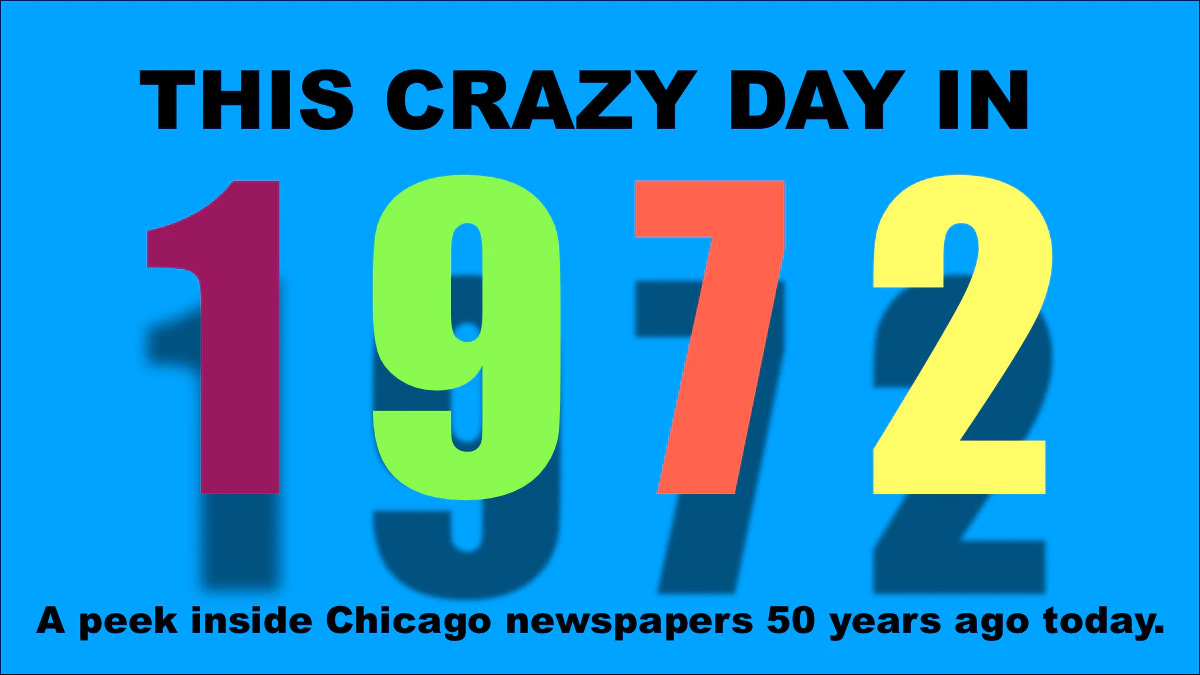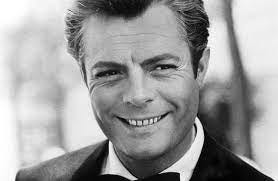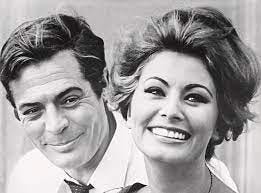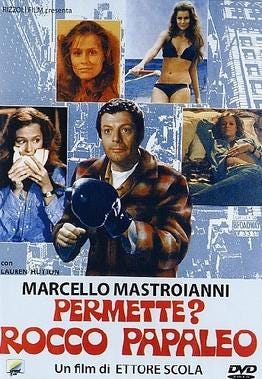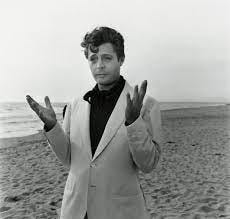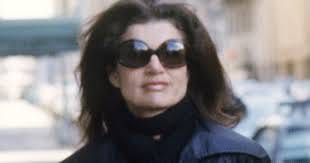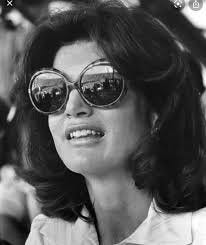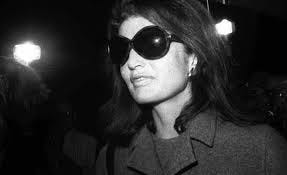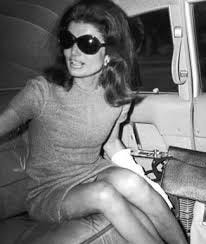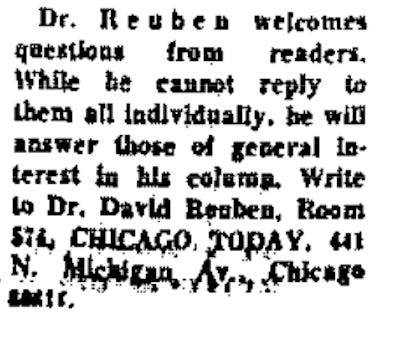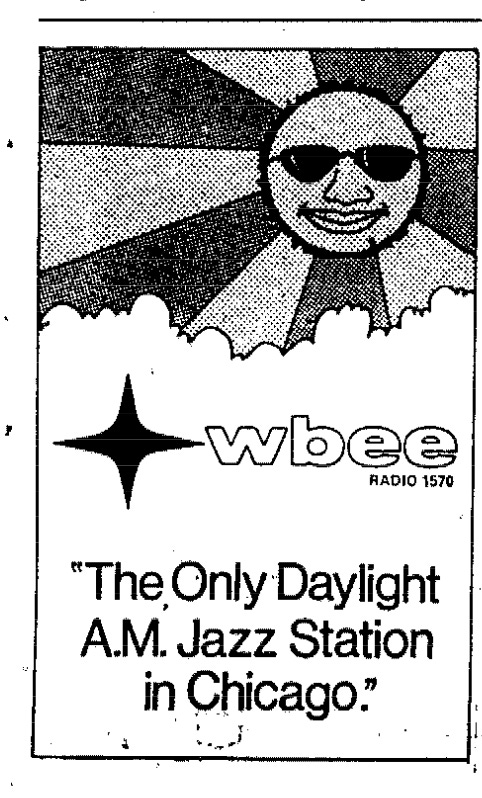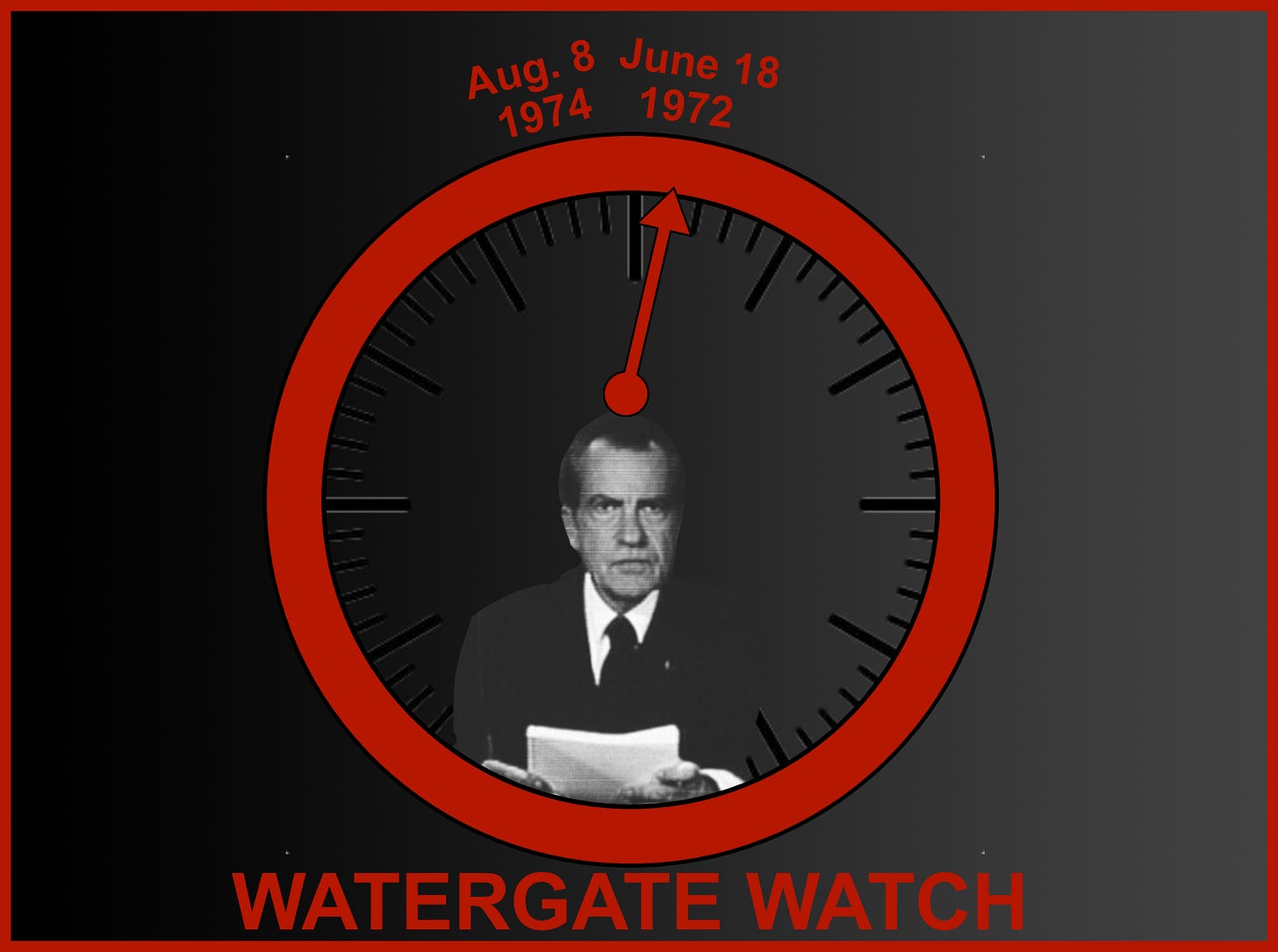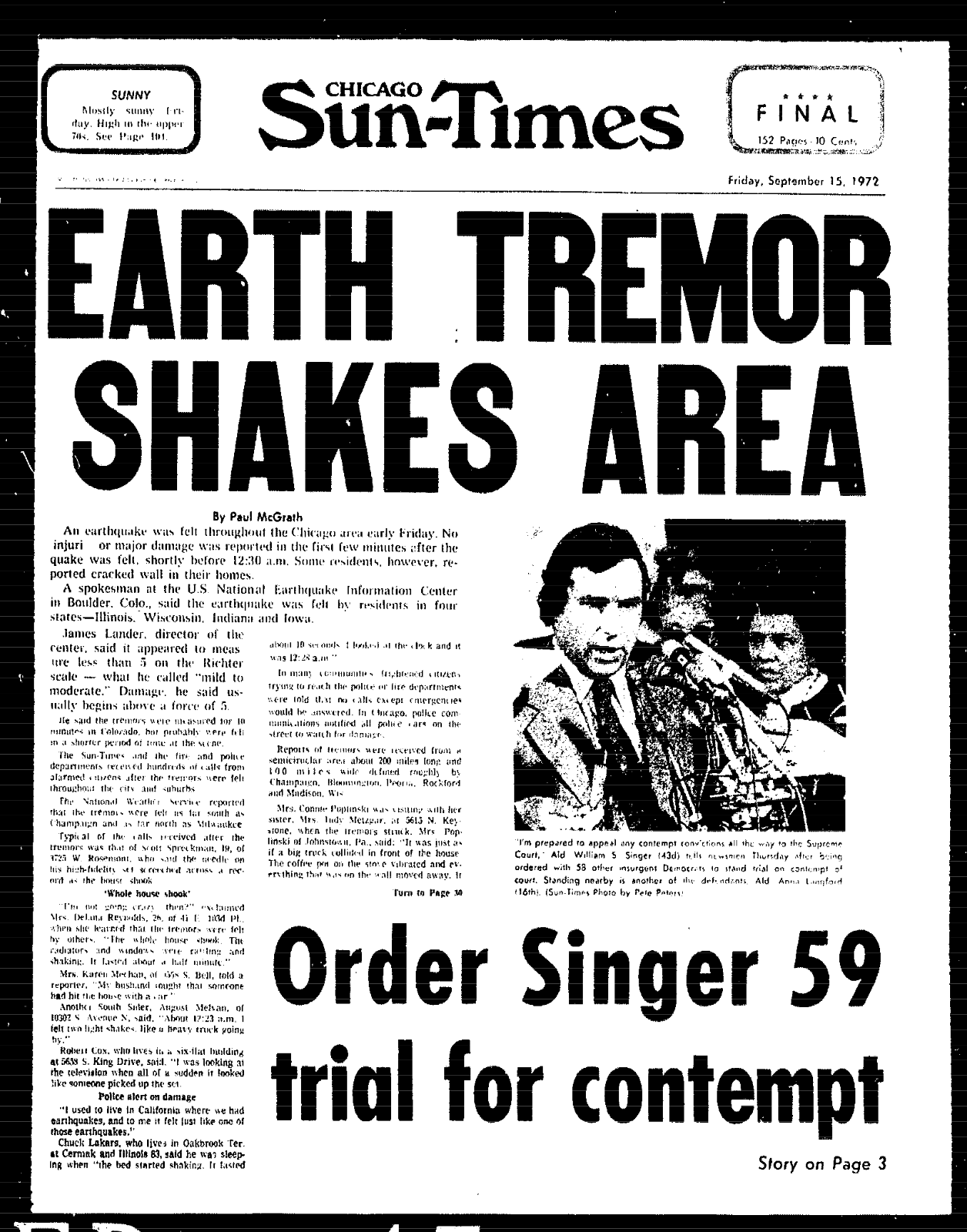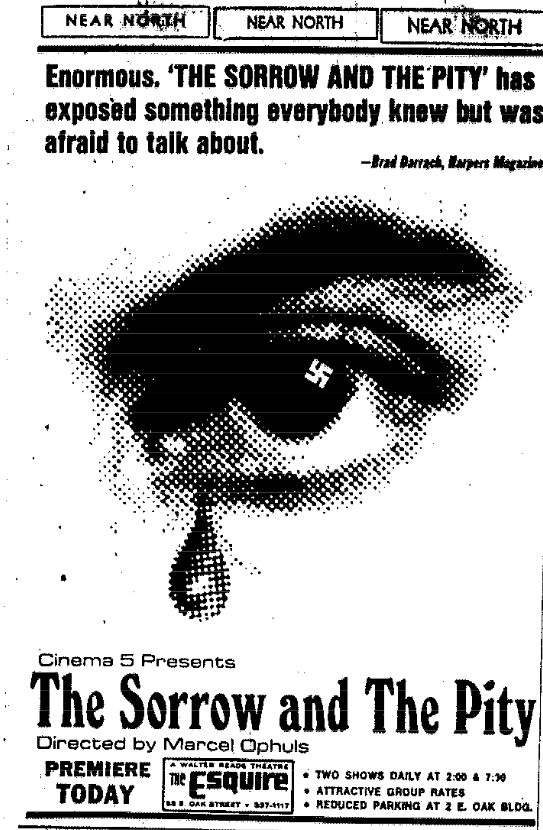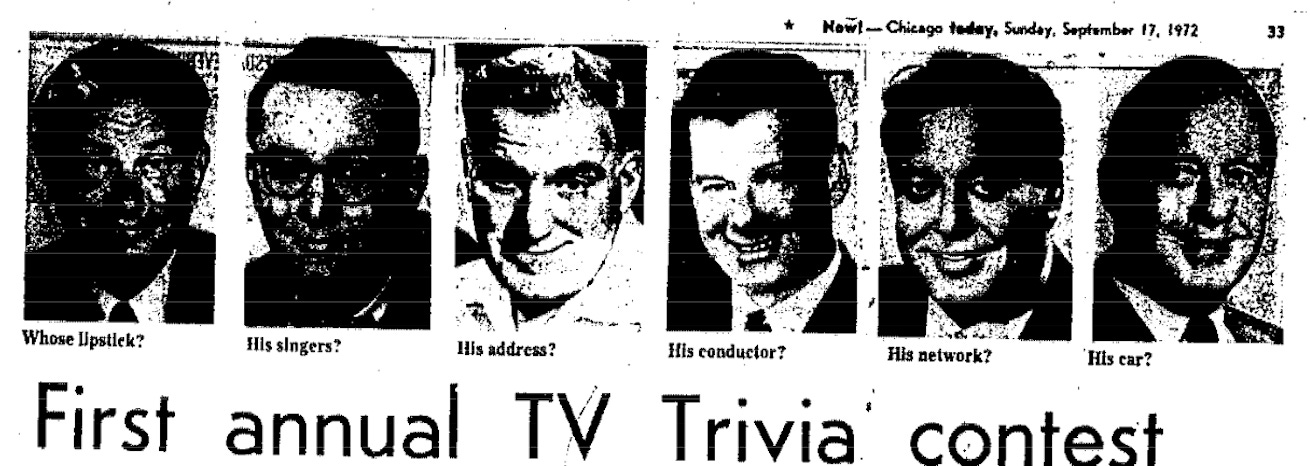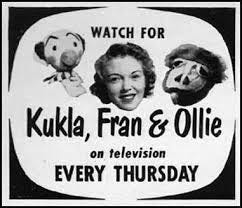THIS CRAZY DAY IN 1972: Bruce Vilanch meets Jackie O
September 11-17, 1972
To access all website contents, click HERE.
Why do we run this separate item peeking into newspapers from 1972? Because 1972 is part of the ancient times when everybody read a paper. Everybody, everybody, everybody. Even kids. So Steve Bertolucci, the 10-year-old hero of the novel serialized at this Substack, read the paper too—sometimes just to have something to do. These are some of the stories he read. Follow THIS CRAZY DAY on Twitter: @RoselandChi1972.
September 11, 1972
Chicago Today: Bruce Vilanch
Have you missed Bruce Vilanch? I sure have.
Quick recap for new readers: In our 1972 timeline, we met Bruce Vilanch as Chicago Today’s TV critic. He will leave Chicago Today and go to Hollywood. Wikipedia incorrectly says he worked for the Tribune.
This makes sense from Wikipedia though: “As an entertainment writer, he began spending time with as many celebrities as would let him.” Wikipedia says Bruce Vilanch made friends with Bette Midler this way and wrote material for her 1974 Broadway show. And he was off!
You may know Bruce for his time on Hollywood Squares, or for famously writing for the Oscars show for many years, among so many other enterprises including his 2000 off-Broadway show “Bruce Vilanch: Almost Famous.”
Bruce stopped writing his regular “TV Report” column in July when Chicago Today put him on their Democratic National Convention press team. Sadly, Bruce didn’t produce much at the convention. He switched afterward to reviewing concerts, with a few general entertainment articles here and there.
It’s been a busy summer so we didn’t have time for Bruce’s reviews of the Jackson Five or Sonny and Cher; his interviews with Allan Funt and James Earl Jones; or a feature on area hitchhikers. We’ll catch up when we look at Bruce’s overall 1972 output in a post devoted to him next year. After December 31, we will have documented 1972 on a weekly basis, and we can take time to focus on special topics.
Bruce disappeared from Chicago Today completely after August 20—until today. And what a triumphant return. You’ll wish you bummed around Europe on vacation with Bruce when you read this.
“PARIS—Several quiet blocks from the Eiffel Tower, Europe’s second biggest tourist attraction was gliding down the street in a black limousine, looking for all the world like someone who didn’t own all the world.
“Jacqueline Kennedy Onassis was returning home from lunch. She does this nearly every day, but not always in the same place.”
Jackie Kennedy’s second husband, Aristotle Onassis, was always described as a “Greek shipping magnate Aristotle Onassis.” He was monstrously rich, when being monstrously rich was less common, and there was much talk earlier this year about what kind of deal Jackie allegedly struck when she married him. We’ll get to that when we go around 1972 again next year—it was very sensational, but more pressing news kept it out of TCD1972.
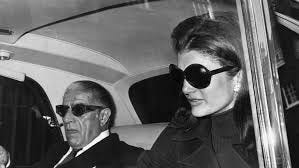
In 1972, Jackie O is flitting between Manhattan; her own personal Greek island; a yacht; and of course, Paris. Younger Readers may wonder why a former First Lady of the United States became, for no particular reason besides wearing fashionable clothes, the biggest global celebrity of her time. But she did.
Bruce notes that Jackie O was generally followed by a pack of photographers, a preview of what was to come for Princess Diana. That’s another Jackie O topic we’ll cover in our second round through 1972, because a photographer sued her. It was crazy.
“But there was no crowd today,” writes Bruce. “Just two people standing and chatting in front of the building. And one of them was me.”
Jackie doesn’t know Bruce, “But she did know the other fellow. He was Marcello Mastroianni. Last year he came to Chicago and made a film, in which I had a part.”
This is an amazing piece of understatement, Younger Readers. In 1972, Marcello Mastroianni had been an internationally famous actor for almost 20 years. I mean, just look at him.
Mastroianni was particularly known for Frederico Fellini’s “La Dolce Vita” and “8 1/2,” not to mention a string of movies with Sophia Loren.
This international star spent seven weeks in Chicago in 1971 filming “My Name is Rocco Papaleo,” about a former amateur boxer from Sicily who ends up working as a miner in either Alaska or Canada, depending on the synopsis source, and somehow travels to Chicago, where he has some adventures with Lauren Hutton, now best known for the Richard Gere film version of “American Gigolo.”
On Bruce’s IMDB page, “My Name Is Rocco Papaleo” is listed as his first acting credit. Bruce played a character named Tante Rosa. Unknown today, but I’ll try to find out: How the hell did Bruce end up in that movie?
So far as I can see, you can’t buy or stream “Rocco Papaleo” anywhere. Architecture critic Lynn Becker seems to have a meticulous collection of movies made in Chicago in the late 60s/early 70s—maybe if we’re lucky he’ll read this and tell us where to find it.
In the meantime, there is one spot where you can watch a fun trailer. I don’t think Bruce is in it, unfortunately.
It was a big deal when Marcello Mastroianni came to town. Mastroianni spent at least one entire day at the corner of Wacker and Wabash, filming a scene where he gets hit by a car.
Eleanor Page’s celebrity/gossip column covered the big welcome party at Michael Kutza’s house—Kutza famously ran the Chicago International Film Festival. Page mentions later that Kutza’s place is a “four-room deluxe, Near North Side apartment” with a “six-foor-square kitchen”. The bedroom featured cardboard clouds hanging from the ceiling.
My dear, anybody who was anybody in Chicago was there—and I just know that included Bruce. I had no intention of devoting so much space to a 1971 party that has nothing to do with Jackie O, but I could not resist the description of what the men were wearing:
“It was hot pants all the way at the soiree,” Page wrote—about the women. “The wall-to-wall crush in Mike’s living room was reflected in the mirrored ceiling, giving guests the feeling that the place really was swarming with people. Dori Wilson was wearing a skin tight shirt and the tiniest of shorts in matching shocking pink…”
“The men favored hip hung slacks, decorated belts, and bright shirts. Peter [Goldfarb, who wrote the film] was in orange suede slacks and cardigan jacket. Stanley Paul was reveling in the informality of a turtleneck sweater, his head a mass of curls every which way, in contrast to the tuxedo and slicked back coiffure he sports six nights weekly in the Pump Room. Victor Skrebnesky, the photographer, had on tie-dyed blue suede pants, jacket and T-shirt. The most far out was Christopher Smallwood, architect in crushed velvet slacks and a wrap-around oriental style blouse of several different prints. Marcello looked almost square in his neat dark suit and white high collared shirt—until one noted the nipped waist, patch pockets and tailoring details.”
Marcello, she reports, was surrounded by women nonstop. “Why is it in America everyone is always asking me, ‘Where is Sophia Loren?’” he asked. “I do not know where she is!”
Of course, THIS is probably how Bruce got into the movie: He must have been at this party, and made friends with Marcello before the night was over. But back to Paris.
So there’s our Bruce just chatting with international movie star and sex symbol Marcello Mastroianni in front of Jackie O’s building in Paris. Mastroianni was then living in Paris with Catherine Deneuve and their infant daughter.
“We were renewing our acquaintance in front of his apartment house when the O limo pulled up,” writes Bruce. Maybe Mastroianni lived in the same building with Jackie O—it’s a little unclear. He may have lived next door.
“It discharged a tall, dark haired woman. This was Jackie O. She was followed by a short man in a white linen suit. This was not Ari O. It was Emmanuel U. More later.”
“EU kissed JO on both cheeks, climbed back into the limousine and and it sped off. JO removed her voluminous black sunglasses and headed for the doorman. Then she spied Mastroianni.
“‘Ciao, Marcello!’ she cried.
“‘Ciao, Jackie!’ he returned.”
As Marcello and Jackie carried on in Italian and French, Bruce said to the doorman: “My God, that’s Jackie O.”
And then Marcello introduced Bruce to Jackie O!
“‘A pleasure,’ she said in that voice which still sounds like the soundtrack of an early Marilyn Monroe performance.”
In their smalltalk, Jackie mentions that she flew up to Paris for the day “to buy clothes from a marvelous new designer, Ungaro.”
“I took this as a coy joke, since Ungaro has been designing clothes for many years. The white linen suit was one of his biggest coups,” writes Bruce.
“‘Oh,’ I replied jauntily. ‘I thought you bought all your clothes at Loehmann’s.’”
Bruce explains his own coy joke for those who don’t know: Loehmann’s was a discount chain then located in the Bronx, which was known for buying overruns of high-fashion clothes, “ripping out the labels” and selling them cheap.
“There was a pause,” Bruce relates.
“‘Ha, ha, ha,’ Jackie O said, ‘I gather you are from New York.’”
“No joke is too coy for her,” Bruce notes.
Jackie O elegantly finished the small talk:
“‘Well, I must be off. A pleasure,’ she said.
“Hand kissing all around and she was gone.”
September 12, 1972: Chicago Today Trivia Contest ad
Chicago Today
Chicago’s first television station, WBKB (owned by the Balaban & Katz theater chain) broadcast a Cubs game in 1946, but commercial television was still a toddler for the rest of the ‘40s. Let’s just go with 1950 as a starting point, since the rest of the basic channels were in place by then—WGN, WBBM, & WMAQ. WBKB would become WLS.
20 years is the standard unit of measurement for a cultural trend to become nostalgic. So it figures that in 1972, we see the first stirrings of nostalgia around television—and, of course, that means trivia.
Older Readers, did you think trivia started with “Trivial Pursuit” in the 1980s?
Younger Readers, did you think trivia began with the first bar trivia night you were old enough to attend, a year or two ago?
No. Everything is always older than you think, and trivia is no exception.
Stay tuned and see how you do on Chicago Today’s TV trivia. Note that they still put periods in front of the “T” and the “V.”
September 12, 1972
Chicago Daily Defender: Continental Bank full page ad
Apparently you dig reading the 1972 papers. Wanna learn more about the 1972 papers? See Chapter 3 Notes: Chicago Newspapers Circa 1972.
September 13, 1972
Chicago Today: Dr. David Reuben column ad
Dr. Joyce Brothers covers sexual matters sometimes—she’s a syndicated columnist and also in Chicago Today. But as you'll see, Dr. David Reuben may be the first columnist here devoted to sex.
I say “may” because I haven’t made a study of it, and I don’t read the Tribune as closely as the other papers because its content has been so easily accessible for years. There’s definitely no sex columnist in the Sun-Times or Daily News.
Dr. David Reuben’s column started in the last month or so. Is he the first Dan Savage? We’ll see.
If you’re a regular THIS CRAZY DAY reader, you’ll probably want to follow Mike Royko 50 Years Ago Today too.
September 14, 1972
Chicago Today: Illinois Bell full page ad
Younger Readers are wondering what this means. Older Readers know: In the dark past—even after the days when operators had to physically move phone jacks around on a switchboard in various places across the country in order to connect a phone call from one state to another—long distance calls were so expensive that normal people seldom indulged. Or they called relatives long distance and talked for five minutes, tops.
If you did make a long distance call, you did it on the weekend, because the rates were cheaper.
No idea why The Phone Company—as Illinois Bell and all Bell companies were called—bothered to advertise this basic fact. Everybody knew it at the time.
September 14, 1972
Chicago Today: Dr. David Reuben
“My husband says there’s nothing wrong with pornography. I think it’s a terrible thing. Who’s right?”
Dr. David Reuben says they’re both right. Already, he’s taking the weasely way out.
“Pornography in itself is no more than a combination of light and dark marks on a printed page or photographic film. It needs someone who is willing to take it into his brain and make it part of his own thoughts before it can do any harm. Even more important, pornography can’t be slipped into our coffee while we’re looking the other way—we have to deliberately go out and seek it.”
Hm. Dr. Reuben’s outlook is more modern than you might expect by not condemning pornography, until you recall that in 1972, Playboy has been making pornography normal and respectable for almost 20 years. Also, 1972 advertising is well on its way to using women’s bodies to sell every possible product. Some might say pornography was already being slipped into the cultural coffee, to stick with that metaphor.
Dr. Reuben waves off the 1972 state of pornographic books and movies as featuring “pale pathetic people engaging in half-hearted imitations of sexual activities.”
Hm again. Pornography has changed substantially since 1972; it’s especially changed since the onset of internet pornography. Pornography critics now point to the prevalence of violence, for instance. However, even taking that into account, it still sounds like Dr. Reuben may not be fully conversant in what was available in 1972. He clearly has not read Playboy or Penthouse, which has already been around long enough to put a dent into Playboy’s readership so that Playboy will launch Oui in October. For those who don’t know, Penthouse was raunchier than Playboy, and Oui would play at that level.
Dr. Reuben says the only real question about pornography is, “Why anybody bothers to pay good money for trashy blurred pictures and smeared little stories about human reproduction. The answer is an interesting one. Most porno customers are unhappy middle-aged married men who are paying high prices for sex education.”
They are compelled, writes Dr. Reuben, “to flood their minds with the same sleazy fantasies over and over again.”
And if a child is exposed to pornography, he writes, “he gets a big dose of twisted unnatural sex.”
The answer is not suppressing pornography, writes Dr. Reuben, because that means interfering with freedom of the press. On the other hand, “uncontrolled pornography probably distorts the sexual attitudes of young people.”
Dr. Reuben thinks pornography needs an “answer,” so it seems he does think it is a terrible thing, despite his opening.
The answer, says Dr. Reuben, is a good sex education “based on accepting sex as a normal human function related to reproduction and inseparable from human feelings and emotions.” And that sex education should come from home, church, and school—all three.
“Once everyone understands what normal sex is all about the pornographers of our nation can go back to their old jobs—scribbling on restroom walls.”
Can’t help but note that Dr. Reuben deliberately misunderstood the reader’s question. Clearly the reader meant that her husband consumes pornography, and she doesn’t think he should. Since Dr. Reuben pretended that was not the reader’s point, he was able to passive aggressively call the reader’s husband an unhappy middle aged man without actually advising the reader on what to do about it
Regardless of whether you always agree with Dan Savage, he answers the question.
September 14, 1972
Chicago Today: letter on women’s clothing
September 14, 1972
Chicago Today: WBEE ads
A new ad campaign starts today for WBEE, AM 1570 in Chicago Today and the Defender. So far as I can see in archives, WBEE will never run these ads in the Daily News or Tribune, and definitely not this week in the Sun-Times.
Isn’t it cute? WBEE’s previous display advertising was limited to the hilarious ad below, which ran twice, in the Tribune in 1971:
Here’s another version of the new ad running today. Both of the happy sun ads run several times per issue for the rest of this week:
WBEE, with a relatively weak transmitter based in south suburban Harvey, reached across the South Side and into the Loop, but not much farther north. However, Chicago lacked a full-time jazz station, so WBEE was nonetheless highly prized. Chicago jazz fans had to get by with a patchwork of jazz programming—a few hours on this day here, a few hours on that one. WBEE was all-jazz weekdays by 1972. The station added jazz in 1955, and started moving towards an all-jazz format in 1968.
In 2000, WBEE celebrated its 45th anniversary of broadcasting jazz. “For decades, one radio station has towered over the rest when it comes to broadcasting real jazz in Chicago: WBEE 1570 AM,” wrote Tribune music critic Howard Reich. Nobody else, he wrote, “puts musical considerations above commercial pressures as consistently as WBEE.”
WBEE owners Charles R. Sherrell II wrote an essay for the anniversary program proclaiming jazz “The Solution to America’s Social, Economic and Political Decay.”
Three years later, Sherrell had sold the station for $2.2 million. WBEE became WBGX, a gospel station.
September 14, 1972
Chicago Daily Defender: Illinois Bell full page ad
Did you read this ad copy? What the heck does it mean?
Just this: In 1972, you had to get your phone from the phone company. In fact, you just rented the phone—the phone company owned it. When you moved and stopped service at an address, you returned the phone. You could get a new one after you set up service at a new address.
But 1972 is crawling into modern times, so now, The Phone Company is telling us, you can take some types of phones with you!
Bonus funny 1972 language, boldface added:
“Here’s the deal. As soon as you know when you’re moving, give your Service Rep a ring. We’ll hip you to what types of phones you can bring with you, and how to make a color or model change.”
September 15, 1972
Chicago Today: Gercherson car found
no byline
“The burned-out hulk of the missing auto owned by a slain Southern Illinois University student was discovered by Chicago police on Aug. 23 near 44th and Federal Streets, CHICAGO TODAY has learned exclusively.”
The body of Highland Park resident Michael Gercherson, 19, was found by a passing driver on May 3, along I-57 about 30 miles from the SIU campus. Gercherson “had been shot seven times in the head, chest, and hips.”
“Witnesses told Prairie Avenue police, who found the burning auto, that three or four black youths poured fuel on the car and then set it afire. The auto was a 1969 black-and-white Chevrolet Caprice.”
Illinois State Police say they’ve been working on the Gercherson case “around the clock.” “‘We must have touched a nerve somewhere to precipitate the torching,’ said Chief Edmund Dobby of the Cook County sheriff’s police, which is handling the murder investigation in the Chicago area.”
September 15, 1972
Chicago Sun-Times: Super Fly ad
Super Fly continues to pull in the crowds.
September 15, 1972
Chicago Tribune: Vernon Jarrett column
Vernon Jarrett continues the heated debate over whether the current crop of “Blaxploitation” movies are good—employing and freeing Black artists—or a bad—poisoning the minds of young Black audiences.
See a mother writing to denounce “Super Fly” in the Defender; Mary Knoblauch’s first and second articles on Blaxploitation films; and last week’s Lu Palmer column in the Daily News denouncing the genre.
“It was only yesterday that a little, white Presbyterian preacher decided to use his access to big money to convert an ordinary black street gang into a fearsome institution in Chicago’s black communities,” writes Jarrett, so you know immediately he’s pulling no punches—not that he ever does.
He’s talking about Jeff Fort and the Blackstone Rangers, who got money from the W. Clement Stone Foundation. Here’s a deep dive into that topic: “The Making of Jeff Fort,” a 1988 Chicago magazine article by Tom Brune and James Ylisela, Jr.
Most Blacks, writes Jarrett, didn’t like money going to street gangs. “But they were either ignored or slandered when they protested.”
Despite the constant killing, he says, “the street gangs attracted a lengthy roster of white sympathizers who ‘explained’ this phenomena in such manner as to direct suspicion at any individual or organization that would dare speak in opposition.”
If an opponent had a job, they were “labeled middle-class snobs” who “don’t want to be black.”
Now, with Blaxploitation movies, writes Jarrett, “here we go again. Taking the lead from a Chicago-based organization named Kuumba, blacks thruout this nation are voicing opposition to the spate of sick, slanderous, pro-filth, fake revolutionary movies being peddled in the name of black cinema.
“And just as we expected, several white writers are coming to their defense. One Chicago newswoman’s descriptions of black opposition is just like the old days. Last Sunday, film critic Mary Knoblauch consumed a full page of Chicago Today in defense of ‘Super Fly,’ the movie that makes a hero of a dope pusher.”
Jarrett repeats some of Knoblauch’s points—such as calling opposition to movies like “Super Fly” “black establishment narrow-mindedness”.
“Miss Knoblauch is no black, but she knows more about blacks than the protesters who live in the black community, according to the ease with which she delivers conclusions,” Jarrett writes. She calls “Super Fly” “reportage.” Why? “Because in real life,” Knoblauch wrote last week, “many of these people [black] cheers men like Priest.” Priest is the drug dealer lead character in “Super Fly.”
“This is an insult to all black people,” Jarrett concludes. “Black people tolerate and understand a lot of sins committed in their midst, but the dope pusher—who is known as such—is probably one of the few sinners that is held universally in contempt by every economic level of black America.
“Will someone please tell this woman that to us blacks, dope means death and misery?”
September 15, 1972: Watergate
Chicago Today
September 15, 1972: Earthquake and Singer
Chicago Sun-Times
On the Sun-Times front page today, one new earthquake and the aftershocks from a gigantic political earthquake in July.
Recall that Ald. Bill Singer organized independent Democrats to get Mayor Daley’s elected delegates to the Democratic National Convention kicked out. Daley and the Machine didn’t following new DNC rules for electing delegates, including a mandate to include more women, minorities and young people.
Singer and his group, co-led eventually by Rev. Jesse Jackson and Ald. Anna Langford, took the Cook County seats at the convention instead—even though Daley’s people got a Cook County judge to order them NOT to do it. Now, Singer et al will apparently stand trial for contempt of court.
Did you miss coverage of the 1972 Democratic Convention at THIS CRAZY DAY IN 1972? It’s right here waiting for you.
September 15, 1972
Chicago Sun-Times: Roger Ebert on “The Sorrow and the Pity” coming to Chicago
Roger Ebert will review “The Sorry and the Pity” next week. Today, he notes that the movie has already been playing in New York for six months, has already “take Europe by storm” as well as last year’s New York Film Festival, and was nominated for best foreign film at the Oscars but lost to an unworthy opponent.
“With all of this going for it, ‘The Sorrow and the Pity’ only now comes to Chicago, a year after its American premiere, and with almost nonexistent advance publicity,” writes Roger.
Last fall, the excuse was that “the film was being held for the ‘right release date.’” Then the excuse was that the movie was being held back until after the Oscars. “After the Oscars, we were told it wasn’t a ‘summertime’ picture. But now it is autumn again, and the movie has been smuggled into town like a state secret.”
This is how movie distribution used to work sometimes. Outside New York or LA, you never knew for sure when a movie might get to you, even in what was then still the second largest city in the country.
Roger’s quick synopsis:
“Marcel Ophuls…takes his camera into the small town of Clermont-Ferrand and talks to survivors of the occupation. He also uses newsreels taken during the war, and he interviews statesmen, resistance leaders, collaborators and ordinary people.
“At last year’s New York Film Festival, there was some doubt before the screening. Does an audience really exist in America for a 4 1/2 hour documentary about the occupation of France? There was no doubt after the screening.”
September 17, 1972
Chicago Today: Marjoe ad
We’ll be hearing more about this Marjoe character. He’s a real person.
September 16-17, 1972: Hawtree murders
Chicago Daily News
by Phil Blake and Jack Gallagher
“The .38 caliber revolver used to fatally wound a soldier near Highland Park has been linked by ballistics tests with the murder of three members of a family near Monee, The Daily News has learned.”
The murder of the Hawtree family on September 4 was a chilling “In Cold Blood”-esque crime. Stephen and Judy Hawtree lived in a rural area near Monee with their youngest son, Thomas, 17. They never locked the doors. At some time Sunday night-Monday morning, between 11 p.m. and 1 a.m., up to three intruders entered, found the Hawtrees in their pajamas, and forced them all into the basement of their modest split level.
It’s thought that Stephen resisted being herded down the steps, because he was stabbed in the back before being shot between the eyes from four to five feet away. His parents were both shot in the chest three times apiece.
Two days earlier, on September 2, Specialist 5 William Richter, 23, was driving cross country when he parked his truck on the Edens shoulder to get some sleep. Richter later told police that a man woke him up asking for directions, then pulled a gun. Richter and the man struggled for the gun, and then “the man’s accomplice walked from the rear of the truck and shot him three times.”
Richter later died at Illinois Masonic Hospital. But a truck driver from Portage, Indiana had earlier pulled off on the shoulder not far from Richter, also to get a few winks. The truck driver was also wakened by a man, who asked for help changing a tire. The truck driver looked in his rearview mirror and saw “another man standing at the rear of the truck who was pulling a shotgun from his jacket.”
The truck driver pulled away, and the men shot at him twice as he sped off. The truck driver called police from the first phone he could reach at Clavey Road and the Edens—remember Younger Readers, this is long before cell phones.
But in the meantime, the assailants found William Richter.
“The Hawtree and Richter slayings were similar in that they both occurred within a short distance of an expressway. The Hawtree home is about one mile off Interstate 57.”
When the Hawtrees were murdered last week, people speculated about a possible link to the sensational murder of the Corbetts in their Barrington Hills mansion earlier in August. But the guns in the Hawtree murders didn’t match the weapons in the slaying of the Corbetts.
September 17, 1972
Chicago Today: Dr. David Reuben
Is Dr. David Reuben the first Dan Savage? Probably not! But let’s see his second column this week. Today, rather than sharing a letter from a reader, Dr. Reuben starts off by himself:
“Why do some women have large breasts while others have to struggle along with hardly anything at all?”
Per Dr. Reuben, medical science just doesn’t know. “At birth all female infants are created equal in that department.”
While breasts develop at puberty with estrogen and progesterone working together, “Unfortunately, some breasts just don’t respond. The fact that nearly every woman’s breasts finally mature to the point where they can produce milk after pregnancy is slim consolation to the teen-ager who wants to fill the top of her bikini.”
Dr. Reuben advises that none of the fads like creams and vacuum pumps work. Exercises can “increase their apparent size but it also can bring on a bone-crushing handshake and huge biceps.”
Hormones sound like the “obvious answer,” he writes, but can cause other problems. The assumption seems to be that if you wanted to use hormones to get bigger breasts, you would have no trouble in 1972 getting them.
“Injections of silicone were very popular some years ago until problems came to the surface,” Dr. Reuben continues. “First of all, the resulting product was hard as a rock—good for striking matches but hardly a romantic ideal.” Plus the scarring and increased cancer.
“A more recent operation deposits a semi-liquid substance, enclosed in special plastic bags, into an incision behind the existing breasts. These little bags nudge the natural mammary tissue forward and give the illusion of more breast tissue…”
“There is a better answer to small breasts,” Dr. Reuben concludes. “It is the realization that .36 is not the magic number. The value of a woman as a wife, lover and friend is independent of the bulk of her bosoms. Instead of insisting that bigger breasts are better breasts, intelligent men are gradually recognizing that how a woman fills their life is more important than how she fills her brassiere.”
Now it sounds like Dr. Reubens is writing from a very distant future, rather than 1972.
September 16-17, 1972
Chicago Daily Defender: “Hammer” ad
September 17, 1972
Chicago Today: TV Trivia contest
“You mean you DON’T know who Crusader Rabbit’s sidekick was? Raggs the Tiger, you know-nothing you,” scolds Chicago Today.
And Jack Webb’s badge number on Dragnet was 714.
The funny thing is, really, that in 2022 you could flip on the TV any night and find out the answer to that Dragnet question without resorting to the internet. Imagine anybody in 1950 still watching a show made in the late 1800s, or someone in 1900 watching a show from 1830. For some reason those date differentials seem stranger, even though in 2022 we’ve made arguably greater technical strides since 1950, when these questions first begin.
There’s going to be a new trivia contest every day in the coming week, so tune in for more next week. All the answers will come in next Sunday’s Chicago Today.
The prizes for today’s contest, if you had guessed correctly in 1972, were “a mammoth prop harp once used on WGN-TV’s ‘Great Music from Chicago’ series”; “an ancient Christmas card from Burr Tillstrom,” the puppet master behind Kukla and Oliver J. Dragon—
—and “a bow tie from Mr. B.T. himself—Fahey Flynn.”

Did you dig spending time in 1972? If you came to THIS CRAZY DAY IN 1972 from social media, you may not know it’s part of the novel being serialized here, one chapter per month: “Roseland, Chicago: 1972” —FREE. It’s the story of Steve Bertolucci, 10-year-old Roselander in 1972, and what becomes of him. Check it out here.



